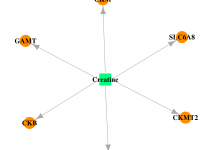Muscle recovery is one of the most important aspects of our body as soccer players, and we need to start addressing it as such. Every gain we have actually happens during our recovery rather than during our training. This is true for muscle growth, endurance and even learning skills and techniques.
While recovery is important for all aspects of soccer, this article is focusing on everything you need to know about optimizing your muscle recovery. Taking the techniques and tips in this article seriously will help you feel less sore, gain more muscle, practice and workout more and harder and overall improve your game.
Let’s start out with an analogy I came across at precision nutrition that I think describes the importance of muscle recovery.
It compares our body to a bank account. When we workout and train, we are making withdrawals from our body’s account. Stresses outside of soccer, such as school, work, relationships and finances can also cause us to withdrawal from our body’s account.
Recovery is how we deposit into our bank account. If we are optimizing our recovery and allowing the proper time for it, then we will always have enough to withdrawal from, without going over, i.e. overtraining or over-reaching.
There is a difference between overtraining and over-reaching.
Overtraining is the most serious, and involves:
• Loss of strength and fitness
• Serious mood changes
• Sleep disruption
• Immunity problems, or always getting sick
• Poor hormonal balance and production
• Chronic joint and muscle pain.
Over-reaching, is milder, but something that happens more often. It involves:
• Low energy
• Half-assed workouts
• Constantly feeling sore
• Mild mood swings
• Nagging injuries
The best way to describe over-reaching is that burnt out feeling you get after a few months of hard training. I have seen this happen to everyone, from national team players to high-level coaches. If we are not taking our recovery seriously, everything from resting our bodies to resting our minds (de-stressing), then we are bound to hit the over-reaching feelings, sometimes even overtraining.
So now that I’ve hopefully motivated you (or scared you, whatever works to get recovery as a top priority), into realizing the implications of not recovering properly, lets take a look at the basics of keeping your body in top notch shape.
The Basics
If we stick to the basic aspects of muscle recovery, then we won’t have to worry too much about over training. However, I do have advanced techniques and tips that we will get into after covering these foundational aspects.
Eat in Optimal Soccer Style
Contents
I hope that by now, you have read our “Soccer Player Diet Breakdown” article. This article covers the basics of how a soccer player should be eating to optimize their performance. Lets cover a couple reasons why this will help you recover faster.
The reason eating in OS style will help with recovery is that it will help you choose carbohydrates that aren’t inflammatory for your body. Our bodies need acute inflammation, because it begins and signals the recovery process for our body. However, chronic inflammation is a major problem, and eating foods that are inflammatory, such as grains, contribute to chronic inflammation. This is why you should love white rice, because it’s completely starch and not inflammatory.
Another reasons the OS diet will help you is that it is higher in fats than most recommended diets. I explain why fats are important here, but for now, just know that they help your brain and hormones, especially testosterone, function at the highest level possible. This is very important for recovery.
Sleep
Sleep is extremely important for your recovery and your performance overall. When we sleep this gives our bodies the downtime to recover from the days training and rebuild muscles. Most players I have played with and worked with do not make enough time for sleep, which I am guilty of as well.
Sleep is not only important for our muscle recovery, but when are sleep deprived, we are also learning worse and becoming more stressed (1). The latter is obvious. Sleep is where our body consolidates memories, and after studying the physiology of learning, it is all about repeating the same technique until it becomes such an engrained memory, we are able to do it nearly perfect without thinking about it (take a second and let that sink in).
Extra tip: Drinking a protein drink before bed improves protein synthesis, which means bigger muscles and faster recovery (2).
Reducing Stress
One of the things we don’t really realize is that it’s not only physical activity that makes “withdrawals” from our body’s bank account. Chronic stress releases the hormone cortisol in our body. This is fine for short spurts, but if we are running on cortisol for long periods of time, our body starts to feel it.
Chronic stress can come in many ways. Some of the ways I feel them most and have seen players I work with feel most come in the form of school, family, girlfriends/boyfriends, financial and work problems. We don’t realize, but these stresses add up and take a toll on our game.
However, there are easy ways to combat these stresses, and the best part is you get to choose what you do. Find an activity that completely de-stresses you. Now, this can’t be something that is physically straining, which is unfortunate because I feel least stressed after a solid practice.
Find something outside of soccer. For me, I started mediating my sophomore year of college. While meditation seems intimidating, foreign and unusually, starting it has been one of the best choices I have ever made. I will definitely write an article dedicated to meditation because its benefits go beyond recovery, but for now, we can take advantage of its de-stressing abilities.
So find something non-physically demanding that de-stresses you, whether it is mediation, light yoga or stretching, going for walks, journaling, or even cooking. Take your mind off the game, let your stresses melt away and enjoy yourself and the activity your doing. You will thank yourself for it next practice.
Beyond the Basics
Now that you know the basics and will begin to implement those, lets look at techniques and supplements we can use to further optimize our recovery.
Eat Cauliflower and/or Broccoli
While this may remind you of your mother telling you to eat your vegetables, Cauliflower, broccoli and sprouts all contain the compound sulforaphane, and molecular scientists at the University of Bonn discovered that deactivates the muscle growth inhibitor myostatin (3). This means that eating these vegetables will help your muscles recover faster and grow bigger. Win-win right?
I recommend buying frozen, organic broccoli, and eating it with garlic, and either grass-fed butter or olive oil. I eat that almost everyday.
Foam Roll
Foam rollers are one of the best developments in sports science I have seen in the last few years. While the practice of massages and “working out knots” has always been around in sports, foam rollers have given everyone a way to help with recovery (4).
Foam rolling not only is a proven way to improve muscle recovery, it has also been shown to reduce the feeling of fatigue while working out, which can do wonders for your mental stamina when it comes towards the 70th minute of an intense game (5).
Cold Water Immersion
The classic ice bath. If you’ve ever taken one, then you know the definition of a love-hate relationship. This standard of muscle recovery has been shown to help restore muscle contractictile function, reduce soreness, restore force production, maintain athletic performance over consecutive training days and in general, recover faster (6,7,8,9).
Also, as Tim Ferriss found in his book, The 4-Hour Body, ice baths, or cold showers helped boost testosterone, increase fat loss and if taken an hour before bed, drastically help with falling asleep. Along with this, cultures that on average live the longest all have some form of cold immersion as a ritual, whether its taking their showers cold or jumping into freezing lakes.
If you don’t have access to a lot of ice or a cold tub, you can always go with a Scottish Shower, which is where you start with warm water and then switch it to cold for about 10 minutes (if you can last). The contrast of hot to cold actually improves the effects of the cold water immersion (10). Also, this is how James Bond showers, so you know it is certified.
Compression Gear
Compression gear has been getting a lot of attention these last couple of years, and for good reason. In a recent meta-analysis, compression gear proved to improve recovery form exercise-induced muscle damage (11).
While we may not want to put on full body suites, there are special compression socks that you can get that go up your knee, underneath your socks and shin guards. This can help improve recovery focused on your calves, which are a problem spot for some players.
Mobility Work
Mobility work is one of the favorite techniques I have worked into my routines over the last year (wish I would have started much earlier). I always tried to work on stretching and the usual cool down methods we would do as a team, but I was never really told to focus on improving my hip mobility until about a year ago. It has made a major difference.
Working on mobility of all joints, especially hips for soccer players will reduce the tightness we tend to feel after a hard workout or intense game. It will also help prevent injuries, since your body will be better at moving.
A great place to get started on increasing your mobility is to go to Mobility WOD and search for workouts that increase mobility in a part of your body that is bothering you. Eventually, you can build up to having a daily mobility routine that will help you recover faster and avoid injuries.
Cool Down
We all know cool downs are important, but do you know exactly what you should be doing for one? Well, if you are doing explosive movements that generate waste products in your blood, such as lactic acid, then you should be doing very light cardio in your cool down.
Light cardio was shown to circulate blood and help remove waste products faster, which in turn helps muscles recover faster (12). Pair that up with some mobility work, foam rolling and a Scottish Shower and you’ll be well ahead of the pack on recovery.
Cardio after Strength
It also turns out that how you structure your workouts has an effect on how your body recovers. If you are lifting and working on cardio, as soccer players have too, then it is best to do strength training first and cardio second. Doing the opposite was shown to lengthen the time it takes to recover (13).
Supplements
Now all the above methods are great for recovery. If you do them all, you will be recovering much faster and as a result, getting back to training quicker and feeling better. However, if you would like to get that extra edge, as most players do, then there are supplements that we can use to improve our recovery time.
L-Tyrosine
L-tyrosine is a precursor to adrenaline and dopamine, and when your body can’t burn either of those two, it moves to burning cortisol, which will add extra stress to your body. So if you’ve had a couple hard days of training, then taking a l-tyrosine supplement can give you extra supplies for your body to produce adrenaline and dopamine, rather than moving onto cortisol (14).
Rhodiola
Rhodiola is an adaptogen, which means it helps the body adapt to stress, which is an interesting and useful supplement for athletes (15). This means that supplementing with Rhodiola could help our bodies adapt quicker to the stresses of workouts and trainings.
Curcumin
Curcumin is the main components of turmeric, which is a main seasoning in curry. You can buy supplements of curcumin and take 400-500mg of it to help with inflammation (16). I personally have bought turmeric and use it in my coffee in the morning and my smoothie. A good spoonful of turmeric throughout the day will get you good results from it.
Conclusion
So there you have it! My long list of muscle recovery techniques. Remember to start with the basics. No dosage of supplements will make up for poor sleep and a crappy diet. If you have not already read our article “Soccer Player Diet Breakdown”, I recommend doing so right now to set up the right foundation for your game.
If you liked what you read, please share it. If you have any questions or techniques to add to the list, comment below to let me know!
Keep working hard!
Casey Ames
Head Trainer at Optimal Soccer



No Responses